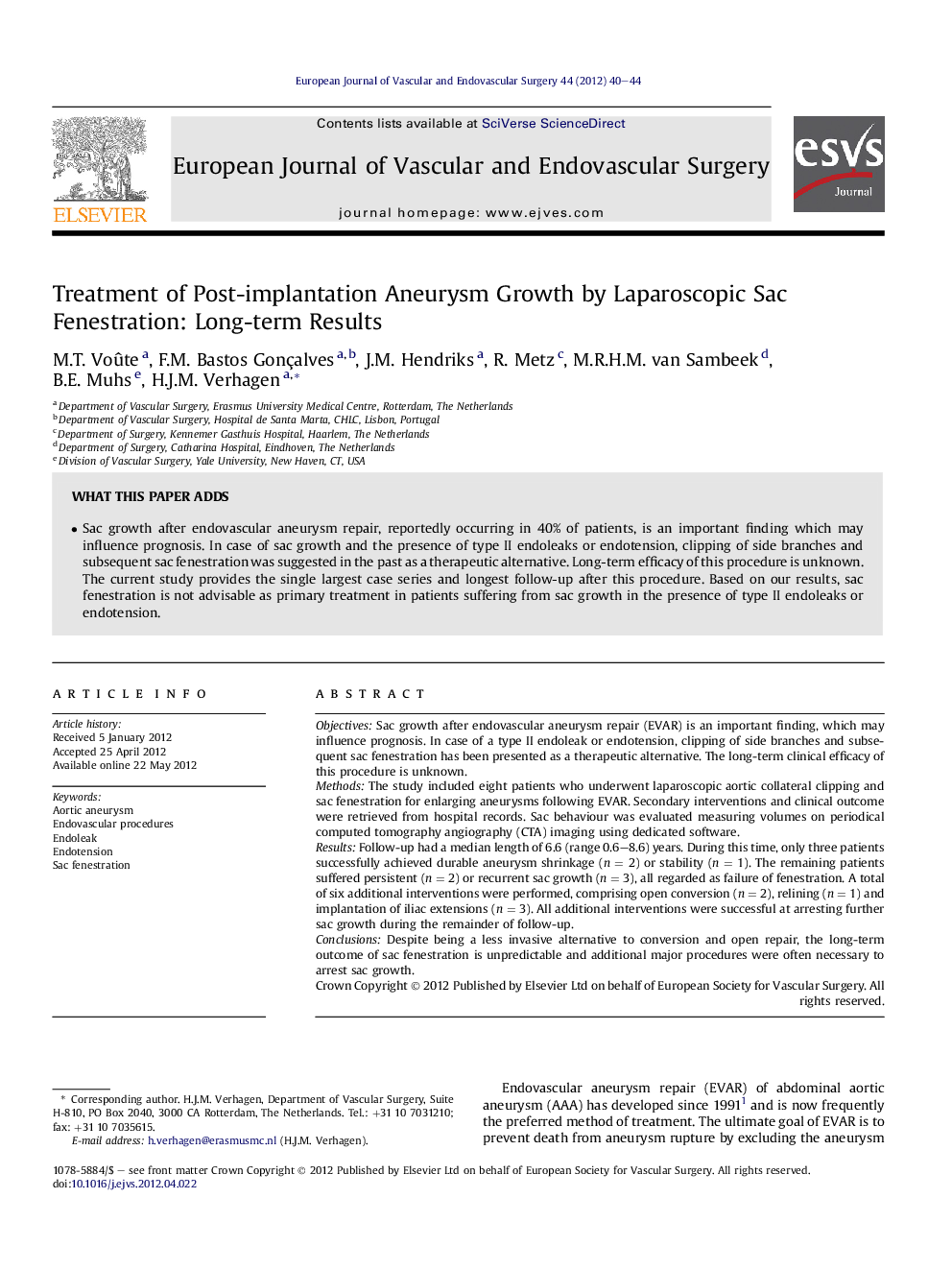| Article ID | Journal | Published Year | Pages | File Type |
|---|---|---|---|---|
| 2912789 | European Journal of Vascular and Endovascular Surgery | 2012 | 5 Pages |
ObjectivesSac growth after endovascular aneurysm repair (EVAR) is an important finding, which may influence prognosis. In case of a type II endoleak or endotension, clipping of side branches and subsequent sac fenestration has been presented as a therapeutic alternative. The long-term clinical efficacy of this procedure is unknown.MethodsThe study included eight patients who underwent laparoscopic aortic collateral clipping and sac fenestration for enlarging aneurysms following EVAR. Secondary interventions and clinical outcome were retrieved from hospital records. Sac behaviour was evaluated measuring volumes on periodical computed tomography angiography (CTA) imaging using dedicated software.ResultsFollow-up had a median length of 6.6 (range 0.6–8.6) years. During this time, only three patients successfully achieved durable aneurysm shrinkage (n = 2) or stability (n = 1). The remaining patients suffered persistent (n = 2) or recurrent sac growth (n = 3), all regarded as failure of fenestration. A total of six additional interventions were performed, comprising open conversion (n = 2), relining (n = 1) and implantation of iliac extensions (n = 3). All additional interventions were successful at arresting further sac growth during the remainder of follow-up.ConclusionsDespite being a less invasive alternative to conversion and open repair, the long-term outcome of sac fenestration is unpredictable and additional major procedures were often necessary to arrest sac growth.
